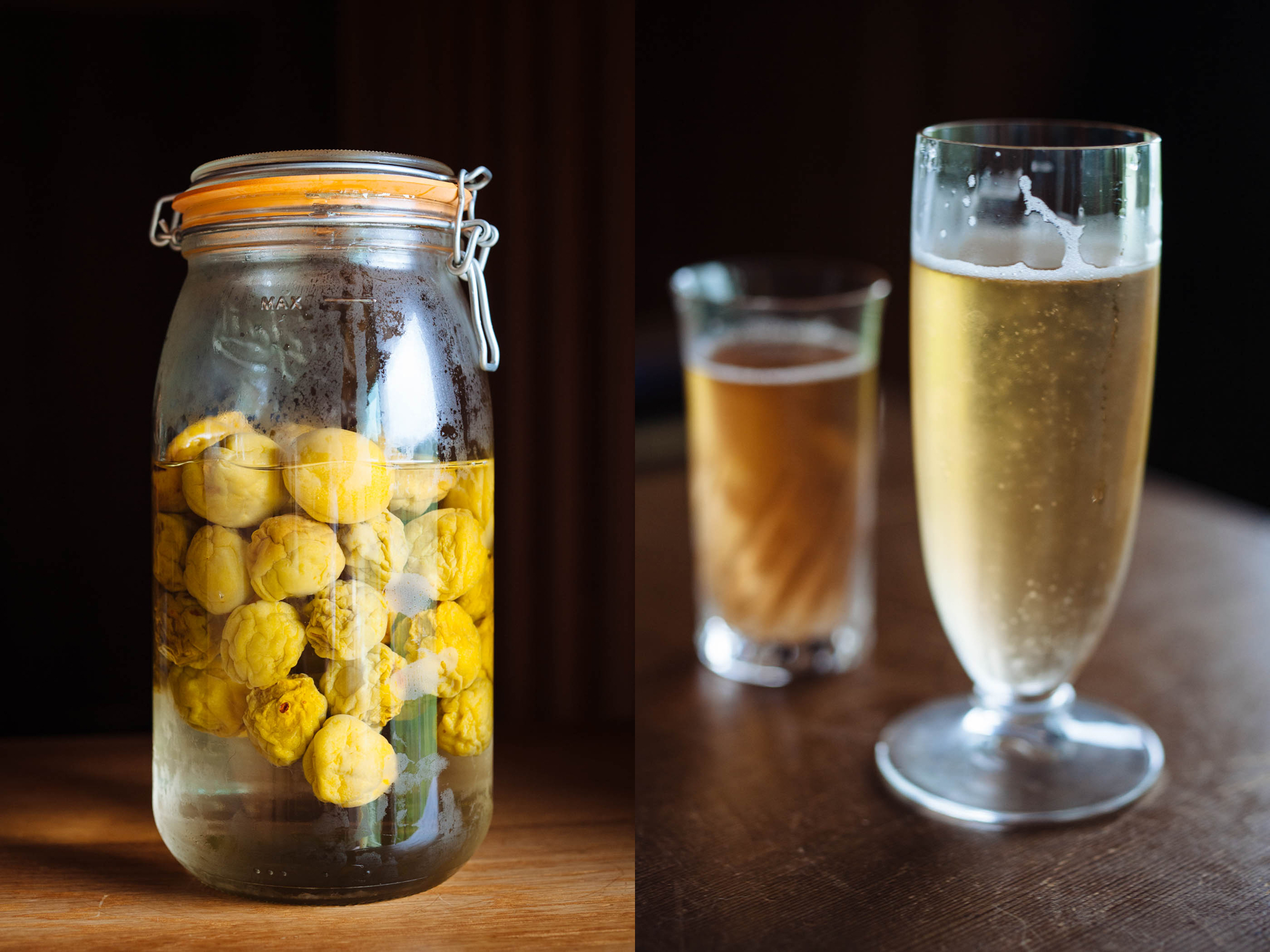Salty, sweet, or spiked
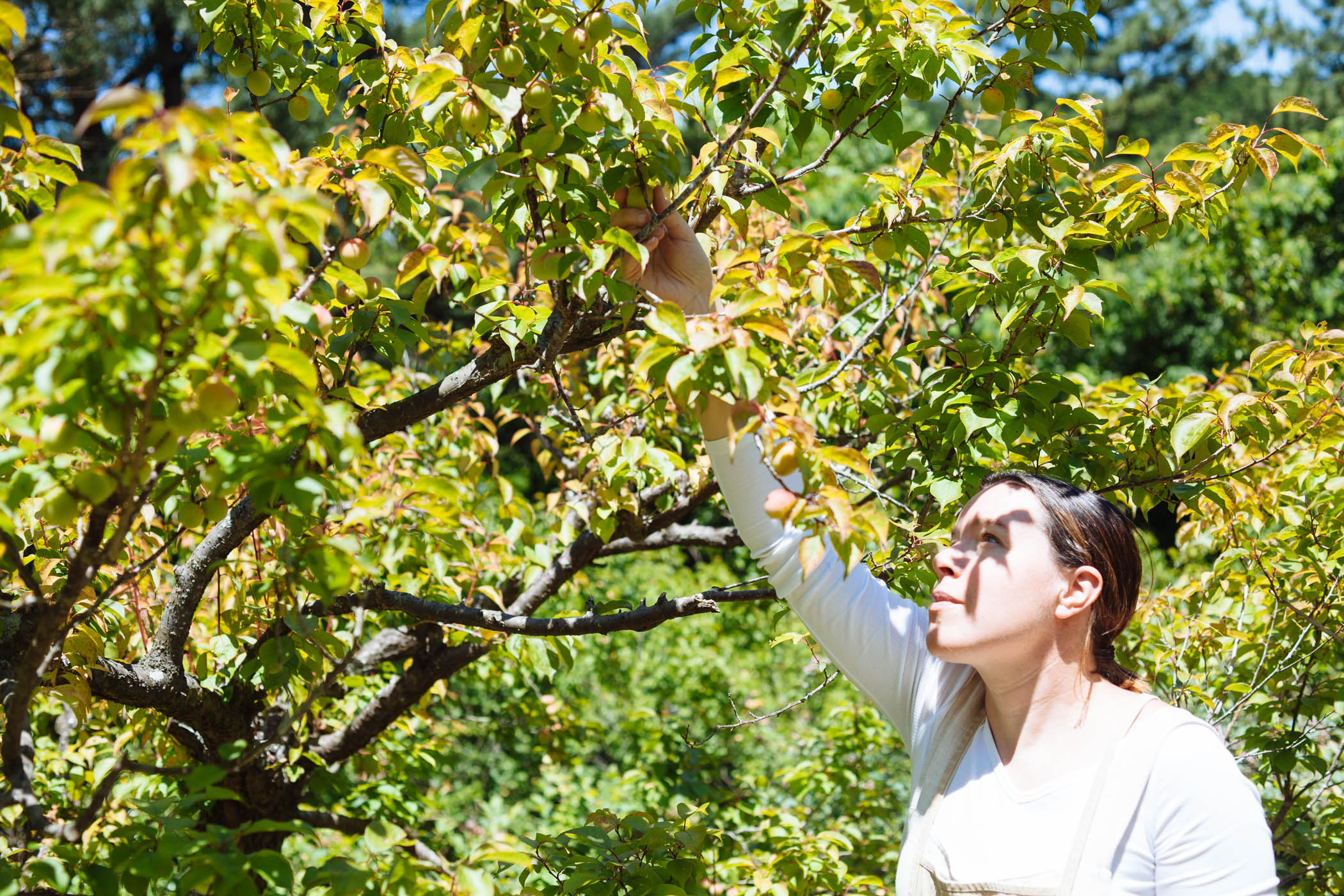
When Kuniko moved from Ryutagama to Mirukashi, on the other side of the same hill, she took her ume plum trees with her. Two would be sufficient. She was 67, retired, and years beyond her former life as career homemaker feeding three children plus numerous guests packed around a 10-foot long table each night. She would harvest from these two trees each June to make just enough pickled plums for her husband and herself to enjoy. At least that was the idea until someone planted 10 more trees. Ume trees, both blossoms and their fruit, are prized in the culture and mythology of Japan. These dozen ume trees bloom each February in our small orchard. Their white, single petal flowers glow in the cold misty air, a delicate promise of a forthcoming spring. Gradually the petals fall, leaves unfurl and rock hard, fuzzy green orbs grow towards ripeness in June.
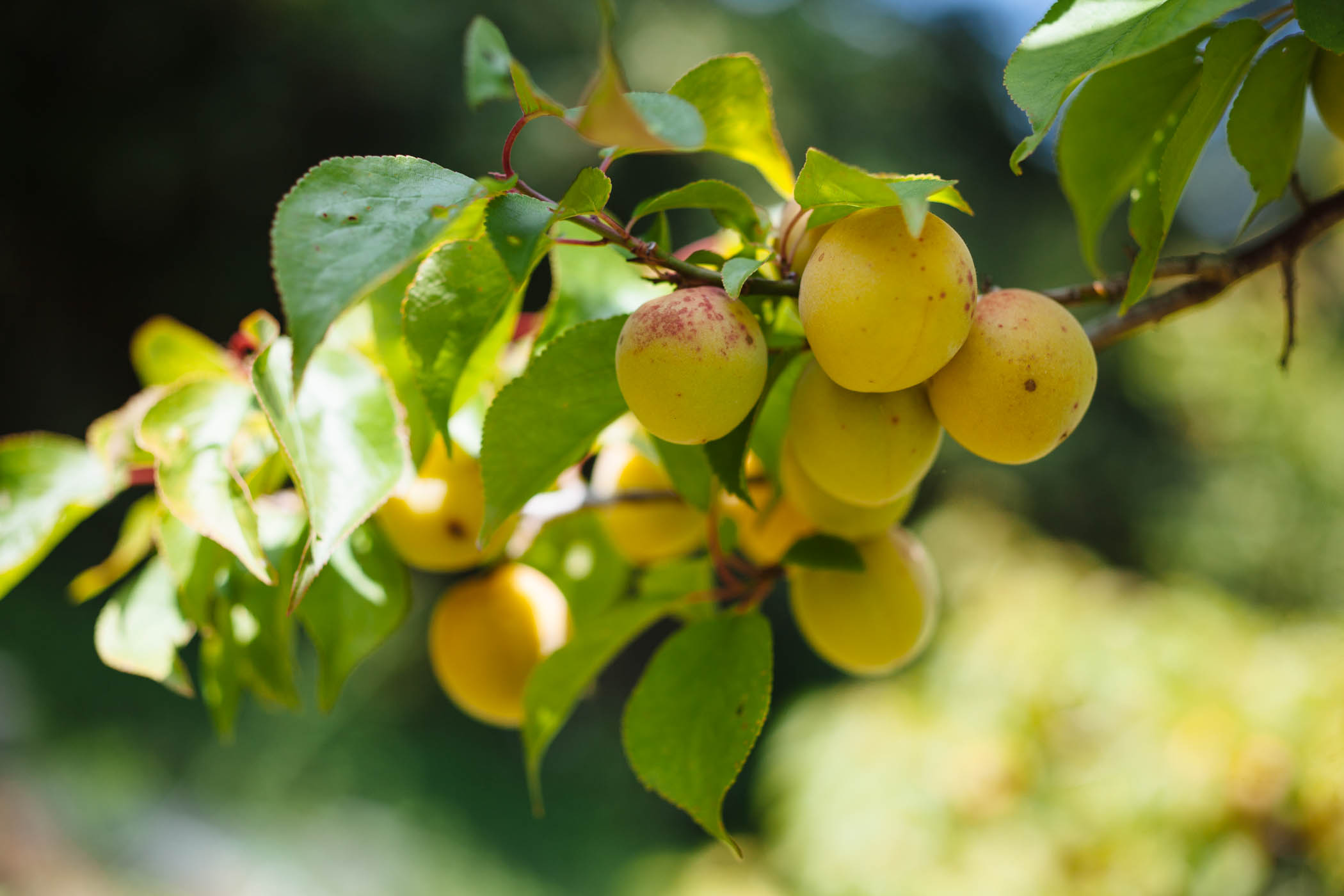

Born in the same year that Japan invaded China, initiating World War II in the Pacific, Kuniko’s understanding of the world was formed during wartime and reconstruction when resources were scarce. The notion of mottainai courses through her veins. So when presented with 12 plum trees in the backyard, she could not bear to watch the fruit fall. Despite giving away a bulk of each year’s harvest, her pantry shelves now buckle under the weight of over 150 liters of umeboshi. To make the finest umeboshi requires a few weeks of occasional attention followed by a long, long wait. As she rounded the corner into her seventies, those prospects no longer held much allure. She sat at her round dining table one afternoon wondering aloud what to do. Though in her heart of hearts she would be forever plagued by that sense of mottainai, many factors pointed to ceasing the annual tradition. There are more than enough in the pantry to last me the rest of my life, she said, as we sipped tea together. But if we don’t make umeboshi, what’s the point of a dozen trees in the yard? we countered. Well, the flowers are lovely, she reminded us. We shrugged. It was only May and the uncharacteristic comment slipped easily from her lips. But come June, we knew she would be out there on unsteady legs under a hot sun harvesting ume because she can’t bear to waste a single one.
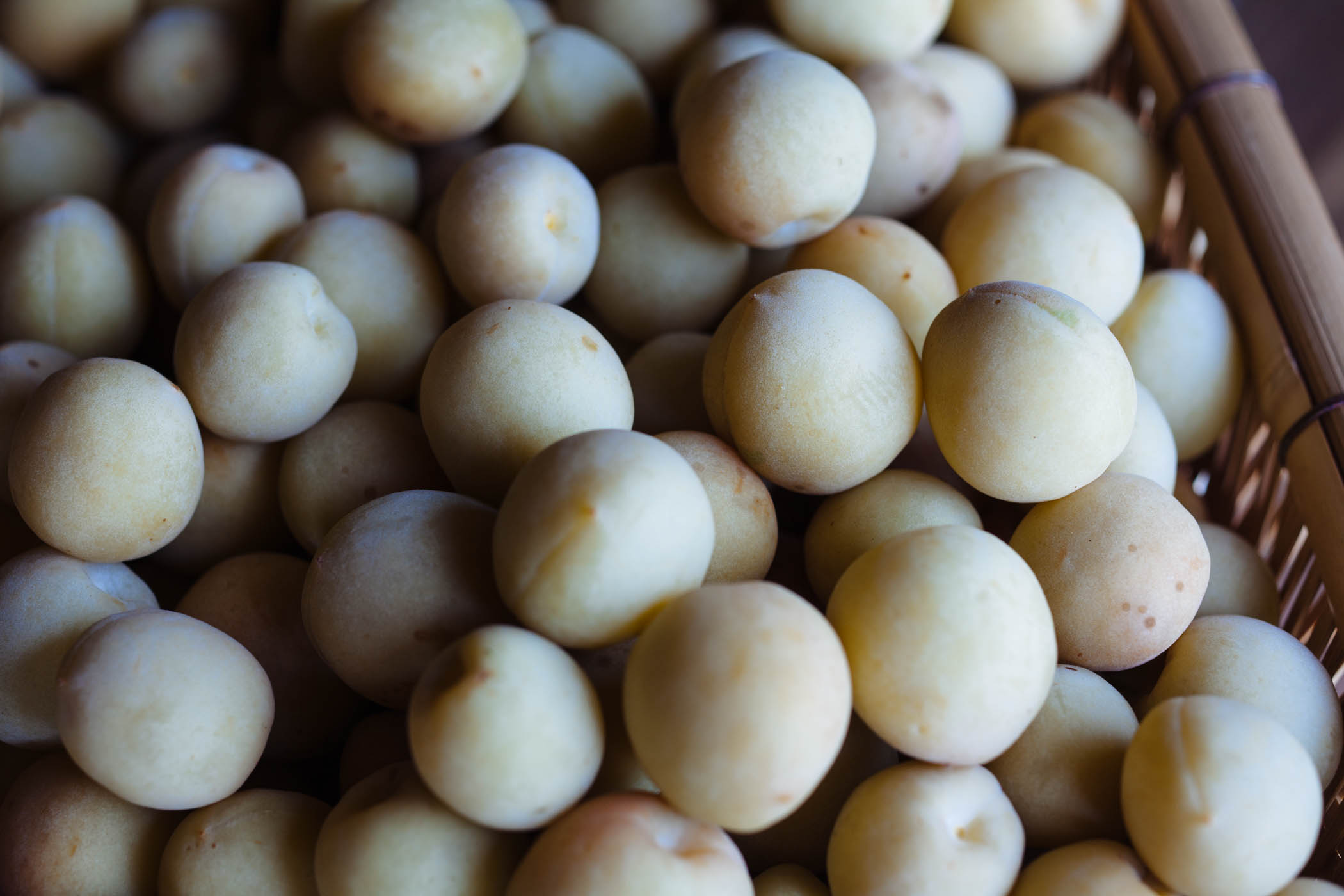
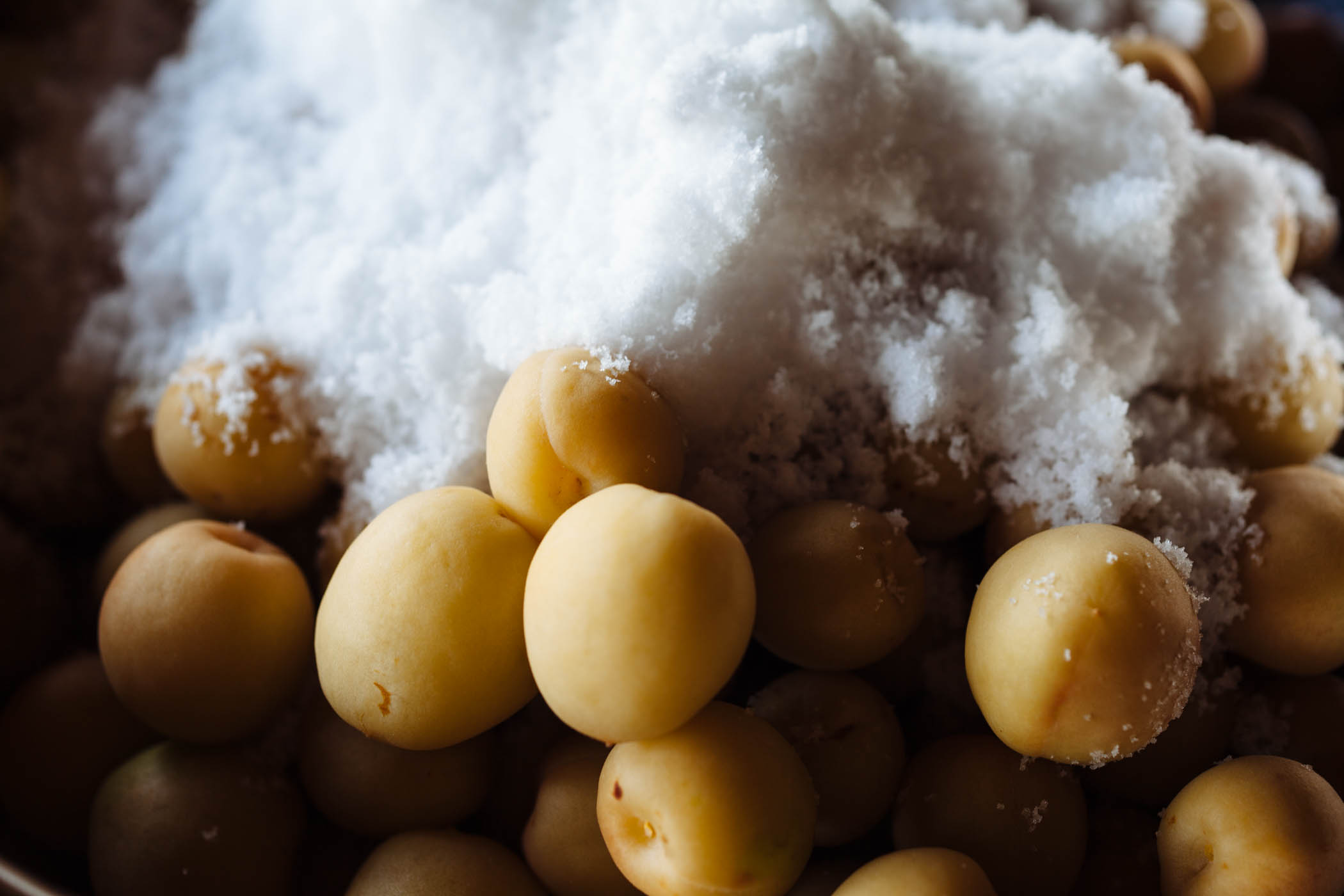
But still it seemed that we were nearing that fork in the road where we risked losing her knowledge, the knowledge of her generation and many generations before. Kuniko is at the young end of the last generation who considered the annual pickling of plums at home atari mae, ordinary and obvious. It’s a familiar story, a repeating refrain in these times. Substitute any country for Japan, any lifelong homemaker for Kuniko, and any ingredient for ume. Within the span between grandparent and grandchild, taste buds that know the old flavors are bred out of the general population and the version at the supermarket, oddly sweet, is mistaken for authentic. The Japanese diet has long been considered one of the healthiest in the world. And umeboshi is among its superfoods, known in macrobiotic circles as the king of alkaline foods. Saturated with citric and other organic acids that break down the detrimental acids built up in our blood from consuming excesses of sugar, refined flours, alcohol, and meat, eating umeboshi returns the blood to a slightly alkaline state that is optimal for prime health. Also revered for its anti-oxidizing effects that slow the symptoms of aging and its natural antibacterial components, consuming umeboshi is credited for improving a long list of physical ailments including indigestion, fatigue, morning sickness, and hangover to list a few. Unfortunately few pickle their own anymore and most store bought varieties are problematic. Quality umeboshi, made of organic ume pickled with salt, undergo lactic acid fermentation over a few weeks before being dyed naturally by red shiso. Store bought varieties are pickled quickly with organic acids and conventional salt, sweetened with sugars, and colored with red dye making what should be one of the healthiest foods on earth yet another source of toxins.
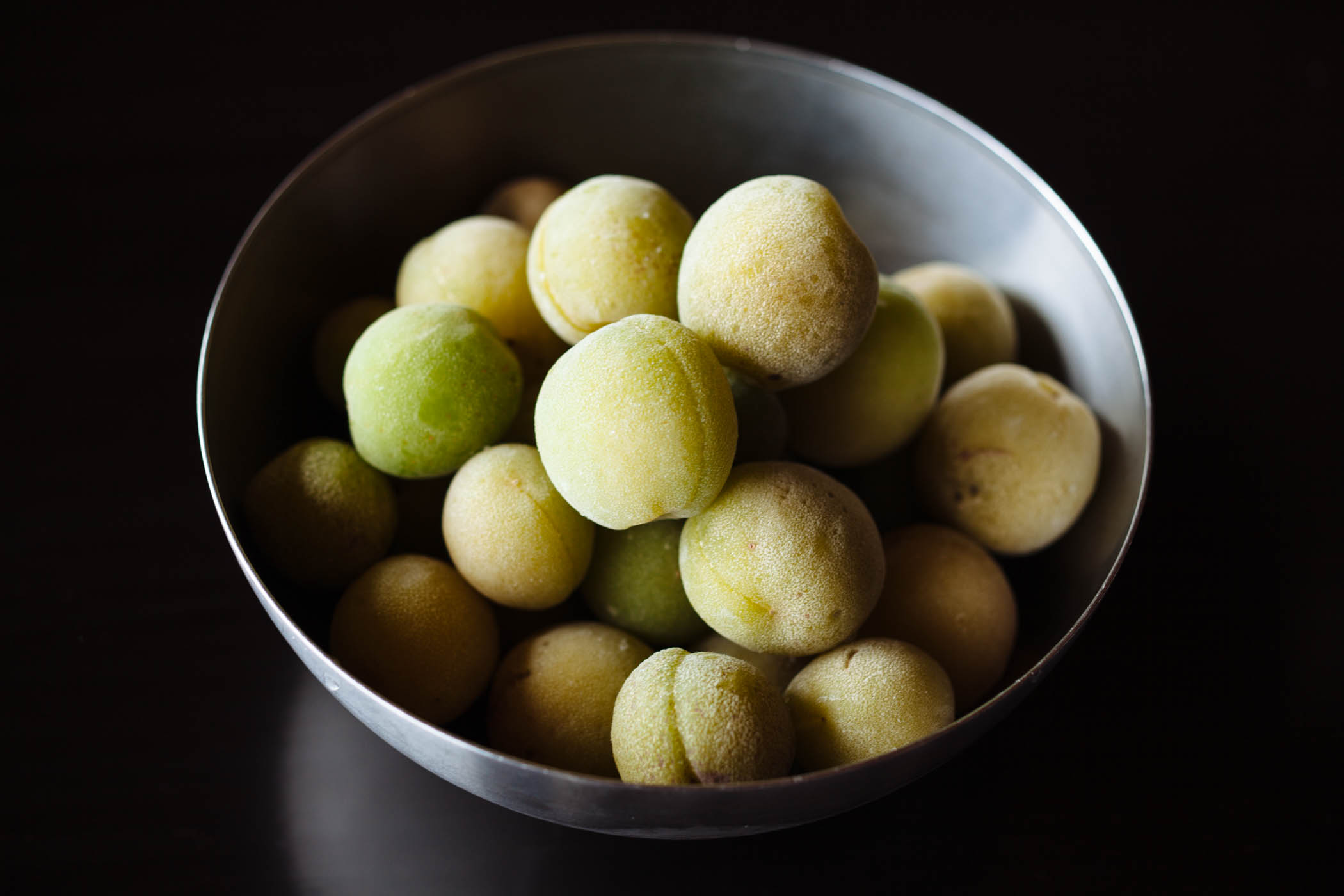

So what of the 12 trees in the yard? I harvested the plums that year and worked alongside Kuniko learning to make umeboshi, ume syrup and liqueur. It was a fateful decision as 6 months later a stroke would render her unable to even remember how to make umeboshi. For the last 8 years I’ve captained the umeboshi ship. My first task was to simply right the course and piece together her process from notes scribbled on a scrap of paper. But year by year I’ve been setting a new course with slight adjustments and alterations. Because umeboshi, like all journeys with food, is personal. Whether you prefer salty (umeboshi), sweet (ume syrup), or spiked (umeshu liqueur), there is an ume recipe for everyone. But what we learn through a recipe or guide or book is only an arrow pointing us in the right direction. From there the pathways are many, some well trodden and some to be carved anew.
